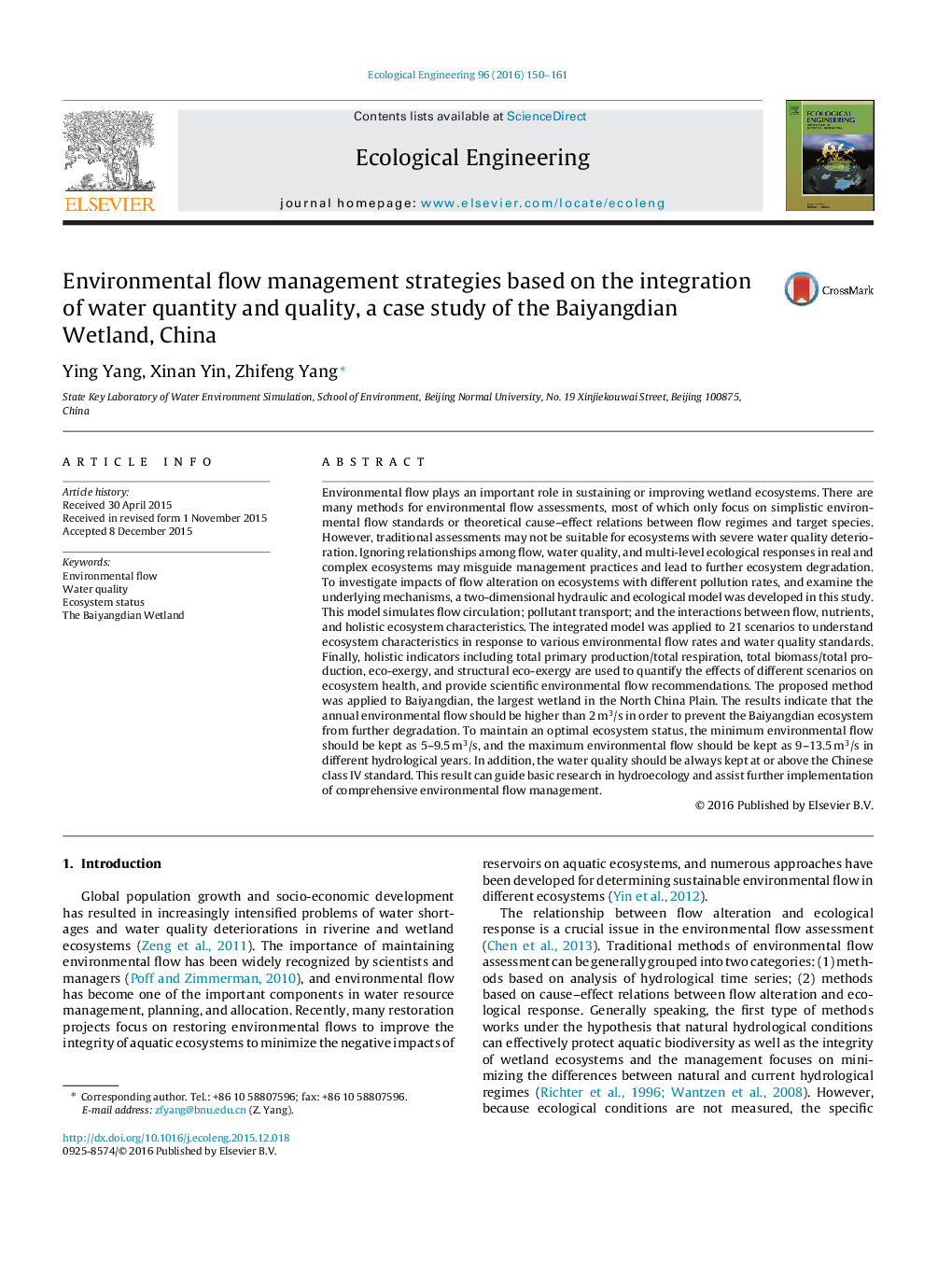| کد مقاله | کد نشریه | سال انتشار | مقاله انگلیسی | نسخه تمام متن |
|---|---|---|---|---|
| 5744097 | 1618003 | 2016 | 12 صفحه PDF | دانلود رایگان |
- Water quantity and quality were both considered in environmental flow analysis.
- A 2-D hydraulic model was used to simulate the characteristics of flow field.
- The ecosystem status was quantified by a range of holistic indicators.
- Compartmental ecological models was integrated based on flow field distributions.
- Scenarios analysis was applied to provide environmental flow schemes.
Environmental flow plays an important role in sustaining or improving wetland ecosystems. There are many methods for environmental flow assessments, most of which only focus on simplistic environmental flow standards or theoretical cause-effect relations between flow regimes and target species. However, traditional assessments may not be suitable for ecosystems with severe water quality deterioration. Ignoring relationships among flow, water quality, and multi-level ecological responses in real and complex ecosystems may misguide management practices and lead to further ecosystem degradation. To investigate impacts of flow alteration on ecosystems with different pollution rates, and examine the underlying mechanisms, a two-dimensional hydraulic and ecological model was developed in this study. This model simulates flow circulation; pollutant transport; and the interactions between flow, nutrients, and holistic ecosystem characteristics. The integrated model was applied to 21 scenarios to understand ecosystem characteristics in response to various environmental flow rates and water quality standards. Finally, holistic indicators including total primary production/total respiration, total biomass/total production, eco-exergy, and structural eco-exergy are used to quantify the effects of different scenarios on ecosystem health, and provide scientific environmental flow recommendations. The proposed method was applied to Baiyangdian, the largest wetland in the North China Plain. The results indicate that the annual environmental flow should be higher than 2Â m3/s in order to prevent the Baiyangdian ecosystem from further degradation. To maintain an optimal ecosystem status, the minimum environmental flow should be kept as 5-9.5Â m3/s, and the maximum environmental flow should be kept as 9-13.5Â m3/s in different hydrological years. In addition, the water quality should be always kept at or above the Chinese class IV standard. This result can guide basic research in hydroecology and assist further implementation of comprehensive environmental flow management.
Journal: Ecological Engineering - Volume 96, November 2016, Pages 150-161
